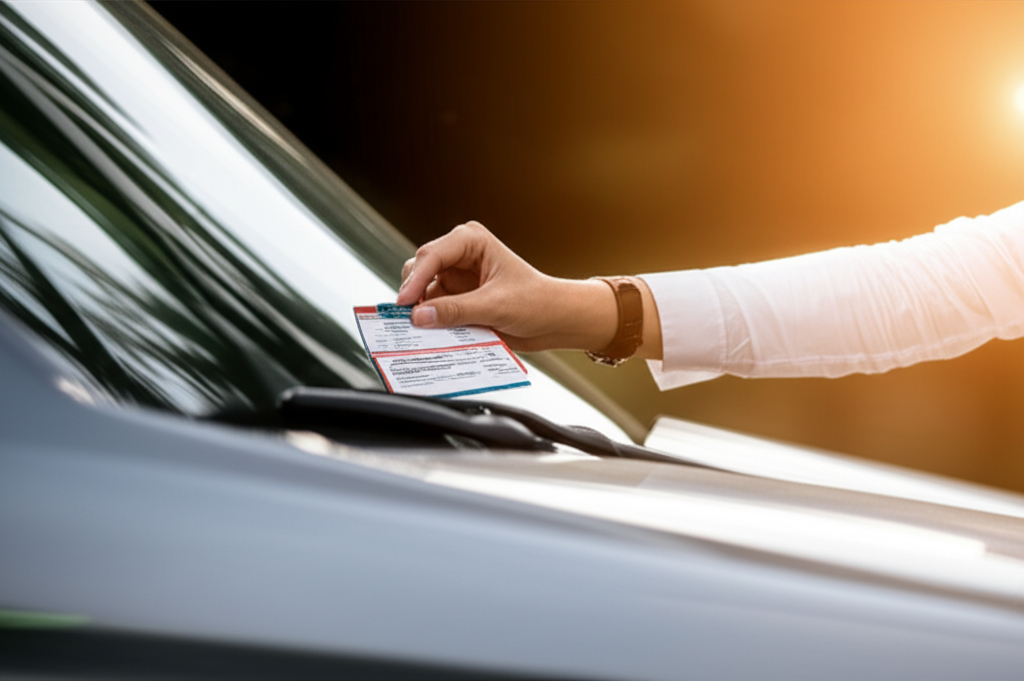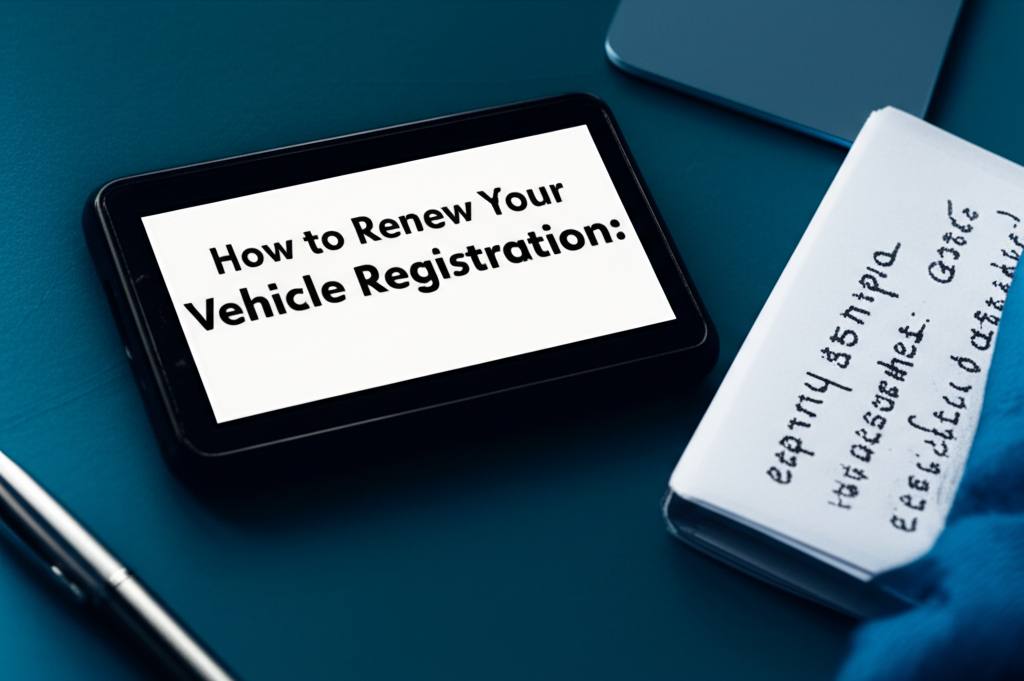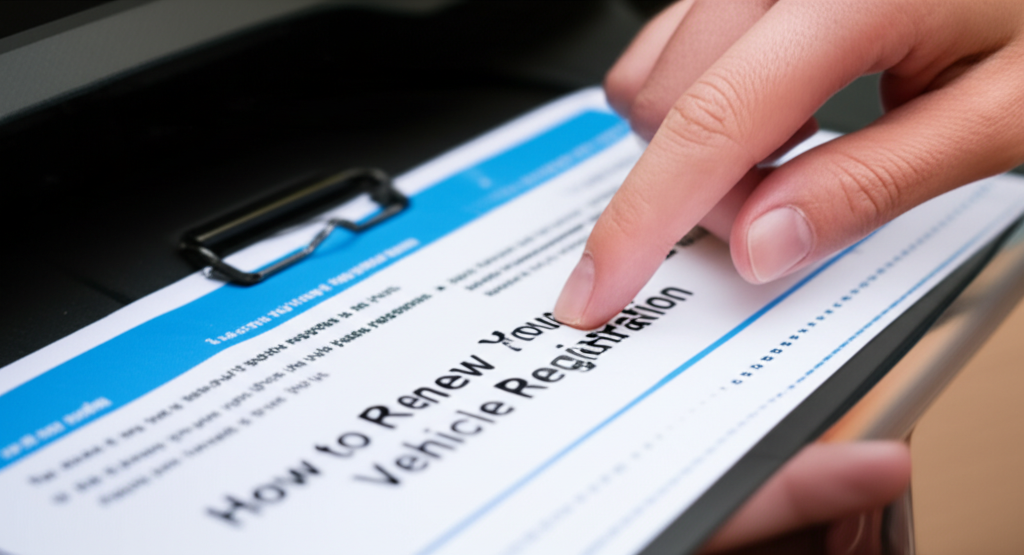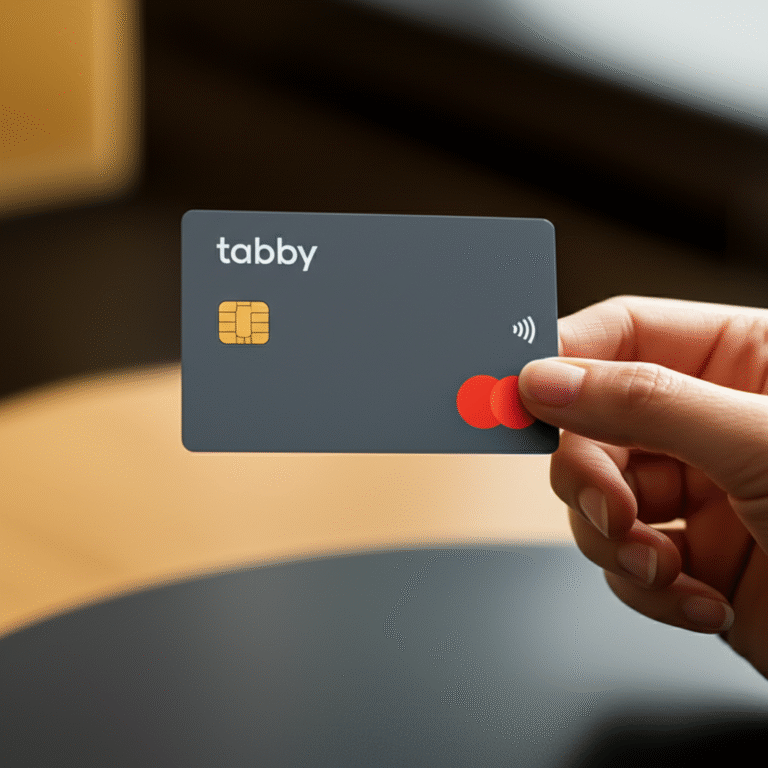How to Renew Your Vehicle Registration: Essential Guide

How to Renew Your Vehicle Registration: Essential Guide

Renewing your vehicle registration is a straightforward process to keep your car legal on the road. Most states offer online options, making it quick and stress-free. You’ll typically need your license plate number, VIN, and payment. This guide breaks down everything you need to know to complete it with ease.
Hey there! Amira here from uaestayinn. It can feel a little overwhelming when that little reminder pops up about your vehicle registration expiring, right? You might wonder about the best way to get it done, what documents you’ll need, and if it’s going to be a long, complicated process. I totally get it! But honestly, renewing your vehicle registration is usually much simpler than it seems. Think of it as a quick, essential step to keep your car road-ready and you worry-free. We’ll walk through it together, step by step, and you’ll see just how manageable it is. Let’s get started!
Why Renewing Your Vehicle Registration Matters
Keeping your vehicle registration current isn’t just about following the rules; it’s a crucial part of responsible car ownership. An expired registration can lead to hefty fines, your vehicle being impounded, and even difficulties with insurance claims. It’s essentially your car’s legal proof of being allowed on public roads. Think of it like a passport for your car – it needs to be up-to-date to travel legally!
Understanding the Basics of Vehicle Registration Renewal
Vehicle registration is a process mandated by your state or local government to ensure your vehicle is legally allowed to operate on public roads. This renewal process typically happens annually or biennially, depending on your location. It typically involves a fee that helps fund road maintenance and other transportation-related services. The core components usually include:
- Vehicle Information: Your car’s make, model, year, and Vehicle Identification Number (VIN).
- Owner Information: Your name, address, and driver’s license number.
- Proof of Insurance: Most states require valid auto insurance.
- Emissions or Safety Inspections: Some areas require your vehicle to pass an inspection to ensure it meets environmental and safety standards.
- Renewal Fee: The cost varies by state and vehicle type.
Your Step-by-Step Guide to Renewing Vehicle Registration
While the exact process can vary slightly from state to state, the general steps for renewing your vehicle registration are quite consistent. We’ll cover the most common methods and what you’ll generally need.
Step 1: Gather Your Necessary Documents
Before you even start the renewal process, it’s wise to have all your important documents handy. This will make the entire experience much smoother and prevent any last-minute scrambles. Here’s what you’ll likely need:
- Current Vehicle Registration Card: This has essential information like your license plate number and VIN.
- Vehicle Identification Number (VIN): Usually found on your registration card, insurance card, or on the driver’s side dashboard visible through the windshield, or on the driver’s side doorjamb.
- Proof of Auto Insurance: Have your current insurance policy details ready. Your insurance company can provide an updated insurance card if needed.
- Driver’s License or ID: You’ll need to verify your identity.
- Emissions or Safety Inspection Certificate (if applicable): If your state requires these, make sure you have the passing report.
- Payment Method: Most agencies accept credit/debit cards, checks, or money orders.
Step 2: Determine Your Renewal Options
Most states offer several convenient ways to renew your vehicle registration. The best option for you will depend on your personal preference and what’s available in your area.
Option A: Online Renewal (Most Common & Easiest!)
This is by far the most popular and often the quickest method. Many states have dedicated online portals for vehicle registration renewals. You can usually complete the entire process from the comfort of your home.
- How it works: Visit your state’s Department of Motor Vehicles (DMV) or equivalent agency website. Look for a section on vehicle registration renewal. You’ll typically enter your license plate number and VIN to access your record.
- What you’ll do: Follow the on-screen prompts, confirm your information, upload any required documents (like proof of inspection if needed), and pay the renewal fee online.
- Confirmation: You’ll usually receive a confirmation email immediately, and your new registration sticker and card will be mailed to you within a few days or weeks.
Tip: Save the website address in your bookmarks for future renewals!
Option B: Mail-In Renewal
If you prefer not to renew online or if your state’s system is not as robust, you can often renew by mail. You’ll usually receive a renewal notice in the mail with instructions.
- How it works: Fill out the renewal form provided in your notice. Make sure to include all required documentation and a check or money order for the renewal fee.
- What you’ll do: Mail the completed package to the address specified on the renewal notice. It’s a good idea to send it via certified mail for tracking.
- Processing time: Allow ample time for mail delivery and processing. Your new registration materials will be mailed back to you.
Tip: Double-check the mailing address and ensure you have correct postage.
Option C: In-Person Renewal
For those who prefer face-to-face service or need immediate assistance, visiting a local DMV or authorized renewal station is an option.
- How it works: Locate your nearest DMV office or an authorized third-party vendor (like some AAA offices or local county tag agencies). Check their operating hours and any appointment requirements.
- What you’ll do: Bring all your required documents with you. You’ll fill out any necessary paperwork and pay your fees at the counter.
- Outcome: In many cases, you can receive your new registration sticker and documents on the spot.
Tip: Check your state’s DMV website for the closest locations and to see if appointments are recommended or required.
Option D: Kiosk Renewal
Some states have implemented self-service kiosks in convenient locations (like grocery stores or libraries) that allow for quick registration renewals.
- How it works: Find a kiosk near you. You’ll typically need your license plate number and a credit/debit card.
- What you’ll do: Follow the on-screen instructions to scan your documents, verify information, and pay the fees.
- Outcome: You can often print your new registration sticker and receipt right at the kiosk.
Tip: These are great for quick, no-fuss renewals if available in your area.
Step 3: Complete Inspections (If Required)
Depending on your state and sometimes the age of your vehicle, you may need to pass a safety inspection or an emissions test before you can renew your registration. These inspections ensure your vehicle is safe to drive and meets environmental standards.
- How it works: Find an authorized inspection station in your area. You can usually find a list on your state’s DMV website.
- What you’ll do: Drive your vehicle to the station for the inspection. The inspector will check various components of your car.
- Outcome: If your vehicle passes, you’ll receive a certificate or a report that you’ll need for registration renewal. If it fails, you’ll need to get the necessary repairs done and have it re-inspected.
Some states are moving away from mandatory inspections, so check your local requirements.
Step 4: Pay Your Renewal Fees
The renewal fee is what funds essential services. The amount varies significantly based on:
- Your State: Each state sets its own fee structure.
- Vehicle Type: Fees can differ for cars, trucks, motorcycles, and electric vehicles.
- Vehicle Age: Older vehicles might have different fees.
- Weight/Size: Larger vehicles often incur higher fees.
Payment Methods:
| Payment Method | Pros | Cons |
|---|---|---|
| Credit/Debit Card | Fast, convenient, often accepted online and in-person. | May incur a small processing fee. |
| Check/Money Order | Widely accepted, no additional fees. | Slower processing, requires mailing. |
| Cash | Instant, no fees. | Only available for in-person transactions, less secure. |
Always check your state’s DMV website for the most up-to-date fee information and accepted payment methods.
Step 5: Receive Your New Registration
Once your renewal is processed and payment is received, you’ll get your updated registration materials:
- New Registration Card: This is the official document proving your car is registered. Keep it in your vehicle.
- New Registration Sticker: This sticker typically goes on your license plate or windshield, indicating the expiration month and year.
If you renew online, these items are usually mailed to you. If you renewed in person or at a kiosk, you might receive them immediately. Be patient if mailing takes a few weeks.
Important Considerations and Tips
To make your registration renewal experience as smooth as possible, keep these tips in mind:
- Renew Early: Don’t wait until the last minute! Renewing a week or two before your expiration date can save you from last-minute stress and potential late fees if there are unexpected issues.
- Check Your Mail: Your state’s DMV will often send a renewal notice by mail several weeks before your registration expires. Make sure your address is up-to-date with the DMV.
- Keep Records: Save a copy of your new registration and sticker information for your records.
- Address Changes: If you’ve moved, remember to update your address with the DMV. This ensures you receive all important renewal notices and other official correspondence. You can usually do this online, by mail, or in person.
- Lost Stickers/Cards: If you lose your registration sticker or card, you can usually request duplicates through your state’s DMV website or by visiting an office. There might be a small fee for replacements.
- Understand Your State’s Rules: Registration laws and renewal procedures are determined at the state level. What’s true for one state might not be for another. Always refer to your specific state’s official DMV (or equivalent) website for the most accurate and current information. For example, some states have moved to longer registration periods (e.g., 2 years), while others are phasing out physical stickers altogether.
External Resources for Your State
To find the most accurate information specific to your location, please visit your state’s official Department of Motor Vehicles (DMV) or equivalent agency website. Here are a few examples of official government resources:
- U.S. Department of Transportation (DOT) – Provides links to state motor vehicle agencies: https://www.transportation.gov/individuals/highway-safety/state-motor-vehicle-agencies
- USA.gov – Offers a directory of state licensing and registration information: https://www.usa.gov/state-vehicle-registration
Simply search for “[Your State] DMV” or “[Your State] Vehicle Registration Renewal” to find your local agency’s website.
Frequently Asked Questions About Renewing Vehicle Registration
Here are some common questions people have when it’s time to renew their car registration:
Q1: How far in advance can I renew my vehicle registration?
Most states allow you to renew your registration up to 90 days before it expires. Some may allow renewals even earlier. It’s always best to check your state’s specific guidelines.
Q2: What happens if my registration expires?
Driving with an expired registration can result in fines, your vehicle being towed, and potential issues with your car insurance. It’s important to renew on time.
Q3: My state requires an emissions test. Where do I get this done?
You’ll need to find an authorized emissions testing station in your state. Your state’s DMV website usually provides a list of certified testing centers.
Q4: I lost my registration sticker. What should I do?
Contact your state’s DMV. You can typically request a replacement sticker and registration card, often for a small fee. This can usually be done online or in person.
Q5: Can I renew my registration if I owe parking tickets or have other outstanding fines?
In many states, you cannot renew your registration if you have unpaid parking tickets, toll violations, or other outstanding fees owed to the state. You’ll need to resolve these first.
Q6: How long does it take to receive my new registration materials by mail?
Processing and mailing times can vary. Typically, you can expect to receive your new registration card and sticker within 1-3 weeks after renewal. If it’s taking longer, contact your DMV.
Q7: Is there a grace period after my registration expires?
Some states offer a short grace period, while others do not. It’s safest to assume there isn’t one and renew before your expiration date to avoid penalties.
Conclusion
See? Renewing your vehicle registration doesn’t have to be a source of stress. By understanding the process, gathering your documents, and choosing the most convenient renewal method for you – whether it’s online, by mail, in person, or at a kiosk – you can easily keep your car legal and ready for your next adventure. Remember to check your state’s specific requirements and renew early to avoid any last-minute hiccups. You’ve got this!





